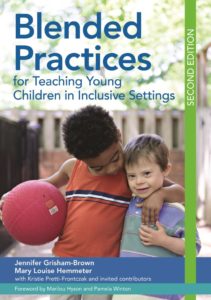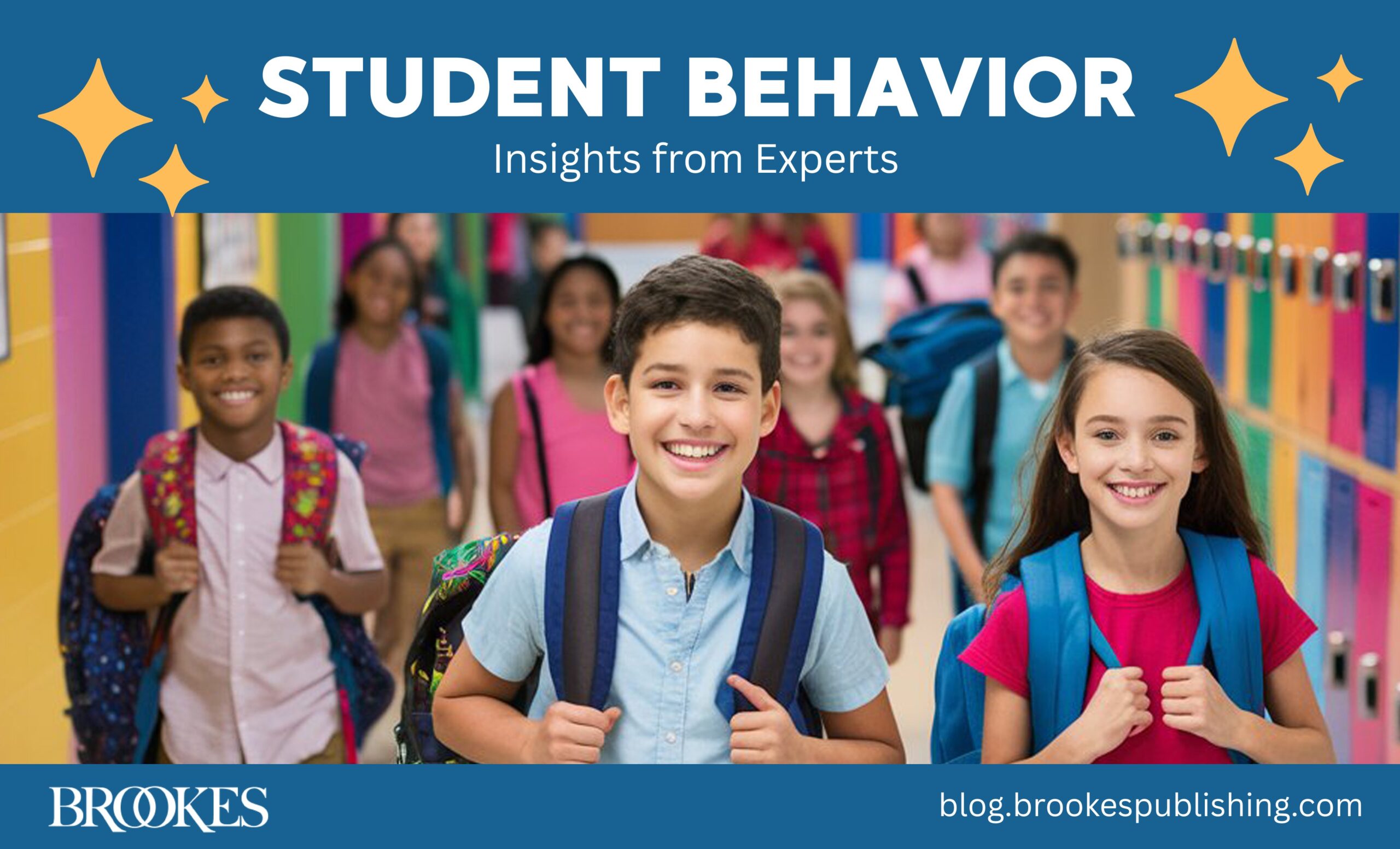19 Simple Strategies for Helping Young Children Develop Relationship Skills
August 6, 2019
 Strong relationship skills help lay the foundation for young children’s social-emotional development. As an early childhood educator, what can you do to help the children in your classroom initiate and maintain these critical social relationships? Today’s post has some simple, easy-to-implement tips, excerpted and adapted from Blended Practices for Teaching Young Children in Inclusive Settings, Second Edition, by Jennifer Grisham-Brown, Mary Louise Hemmeter, and Kristie Pretti-Frontczak. Use these strategies to help you explicitly teach and promote eight key types of relationship skills in your inclusive early childhood classroom.
Strong relationship skills help lay the foundation for young children’s social-emotional development. As an early childhood educator, what can you do to help the children in your classroom initiate and maintain these critical social relationships? Today’s post has some simple, easy-to-implement tips, excerpted and adapted from Blended Practices for Teaching Young Children in Inclusive Settings, Second Edition, by Jennifer Grisham-Brown, Mary Louise Hemmeter, and Kristie Pretti-Frontczak. Use these strategies to help you explicitly teach and promote eight key types of relationship skills in your inclusive early childhood classroom.
To help children with: Initiating and responding to others
Try this:
- Use a scripted social story to teach children specific phrases to use for greetings.
- Use puppets to model and practice initiating or responding. The puppet can say “Good morning” to greet the children and “My name is Reid” when asked his name.
- Provide a communication board with appropriate communication phrases related to greetings and responses to common questions.
- Give lots of positive reinforcement when a child initiates or responds appropriately.
To help children with: Sharing
Try this:
- Intentionally structure your activities so that children have to share access to all materials. For example, provide a limited number of scissors during an art project, play games such as Go Fish that require sharing, or give each child one color of paint and ask them to trade with their peers to gain access to multiple colors.
- Use role play to explicitly model the words children should use to ask for materials (“Can I have some of the blocks?”) as well as appropriate ways to refuse (“It’s my turn on the computer now. You can have the next turn”).
- Throughout your daily activities, look for opportunities to model how you share materials with co-workers and children. Call attention to your sharing and talk through it out loud.
- Look for children’s books that illustrate examples of the benefits of sharing (such as The Rainbow Fish). Read them with your class and discuss how sharing made the characters happier.
To help children with: Turn-taking
Try this:
- Select play materials that encourage turn-taking. Stock your classroom with balls and board games that entice children to play together and take turns in order for their play to be successful.
- As children are engaged in play, encourage them to take more frequent turns as well as increase the duration of the turn-taking.
To help children with: Helping others
Try this:
- Identify a variety of class jobs that focus on helping others, such as assisting peers who are putting their backpacks and coats in their cubbies during arrival time, feeding the class pet, and passing out snack supplies. Assign children different jobs and discuss how each job benefits the classroom.
- Encourage children to ask their peers to help them or demonstrate how to do something instead of relying solely on teacher assistance.
To help children with: Cooperating with each other
Try this:
- Pair children with peer buddies for play activities. Select two children to play together for 5 minutes, and then give them a choice to continue their play or find another activity.
- Give them group projects. Have a group of children work cooperatively toward a common goal, such as creating a collage, assembling a class book, or planting a garden.
To help children with: Giving compliments
Try this:
- Create a “compliment tree.” Start a tree mural on your bulletin board or wall and add paper leaves over time with compliments that children make about their peers. Compliments can be gently encouraged during a small-group activity or spontaneously throughout the day.
- To promote a positive social environment, model giving compliments to your co-workers and children during the school day.
To help children with: Knowing how and when to apologize
Try this:
Role-play scenarios in both large and small groups. Have one child role-play hurting another friend’s feelings and then apologizing to make the friend feel better. To make this activity more concrete for children, the scenarios you suggest could be based on real-life situations you’ve observed in the classroom.
To help children with: Entering and exiting play
Try this:
- Use a scripted social story to teach children specific phrases they can use when they want to enter a play activity with other children. The social story should also include sample “play organizer statements” such as “Let’s play blocks.”
- Have puppets model appropriate ways to initiate and exit a play activity. The puppet can ask, “Will you play with me?” and “Thanks for playing. See you later!”
Try these strategies in your classroom, and see which ones help your young learners develop their relationship skills. And for more guidance on strengthening young children’s social-emotional skills—and teaching all children in an inclusive setting—check out the book:
 Blended Practices for Teaching Young Children in Inclusive Settings, Second Edition
Blended Practices for Teaching Young Children in Inclusive Settings, Second Edition
By Jennifer Grisham-Brown, Mary Louise Hemmeter, and Kristie Pretti-Frontczak
An essential reference to keep and use for years to come, this book is your guide to blending the best of special and general education, developing effective curricula, and improving outcomes for all children.
EXPLORE IT NOW



Write a Comment
Your email address will not be published. Required fields are marked *
Post a Comment